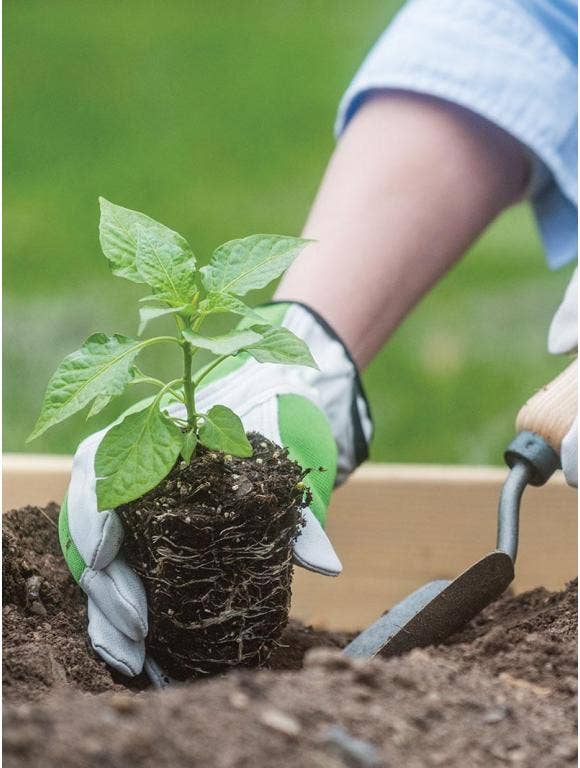
Germinating seeds is just the first step in growing a thriving garden. Once your seedlings have sprouted, it's time to start thinking about how you'll transplant them. Like every other part of the growing process, it's vital to follow certain steps when transplanting plants to ensure they survive. Follow these simple tips to transplant successfully and avoid transplant shock.
How to Transplant Plants
Before you're ready to transplant seedlings into your garden, you'll first need to harden off the plants. Hardening off involves slowly acclimating them to the temperatures and conditions they'll face outside, which are likely different from the growing conditions they've experienced indoors so far.
To properly harden off your plants, spend about a week acclimating them before the transplant. For the first two days, put your plants outdoors during the day in a protected area, where they'll only receive partial sun. Bring them inside for the night and water as needed. On days three to five, place the plants, still in their containers, in your garden and leave them there overnight. Continue to water and cover them overnight (or bring them inside) if there's any chance of frost. If temperatures are ideal (anywhere from 65 to 70 degrees Fahrenheit) on day six or seven, you're ready to plant.
Dig a hole a little bigger than the plant's rootball and about the same depth as the current container. Carefully remove the seedling from its container, avoiding disturbing the roots. Place it in the hole and gently fill in dirt around the plant, adding no more than a quarter inch around the top. Water immediately and keep it continuously moist, without allowing the soil to dry.
What Is Transplant Shock?
Plant transplant shock occurs when a new transplant can't root properly and can't establish itself well. Some of the signs of transplant shock include wilting or yellowing leaves and poor growth. In some leafy greens and herbs, it can cause premature bolting.
Treating plants with special care when transplanting them into garden beds is essential to avoid transplant shock in young seedlings. Some ways to prevent shock include being as careful as possible not to disturb the roots and making sure the rootball stays intact and moist during the transplant. Watering after a transplant is also important, as is the time of day and outside temperatures.
What to Do if Plants Are in Shock
Even when you harden off your plants and transplant carefully, there's still a chance a plant can undergo some stress during the process. If you notice signs that your plants might be in shock, that doesn't mean they have to be a complete loss. You can take steps to rescue a plant from transplant shock.
Trimming the plant back a tiny amount can help focus the plant's energy on new growth. Seedlings may not have much to trim back, but you can eliminate wilted or yellowed leaves. Just make sure you trim no more than one-third of the plant. Watering is also key to treating transplant shock. Keep the soil moist but not overwatered. Lastly, just wait and see. Some plants need a little time to recover from the shock of transplanting and will improve over time.
Tips for Transplanting Plants
Here are a few tips to keep in mind when you're preparing to transplant plants:
- Always wait to begin the process until after the threat of frost has passed.
- If a late frost sets in, plant covers or cold frames can help protect young plants.
- Don't wait too long to transplant cool season plants, like leafy greens and broccoli, which can bolt prematurely in warmer temperatures.
- Keep an eye on temperatures, watching for warming trends to determine your ideal transplanting date.
- Watch for other climate factors and avoid transplanting on a day with extreme conditions, like heavy winds.
- The best time of day to transplant is early morning or late afternoon to avoid immediate direct sunlight.
It can be difficult to lose a plant after all the hard work that goes into germinating seeds, but if you follow the right steps to harden off plants and transplant them carefully, chances are good that you'll enjoy a thriving garden.
For more tips on successfully planting from seed, check out Burpee's guides to seed starting.
